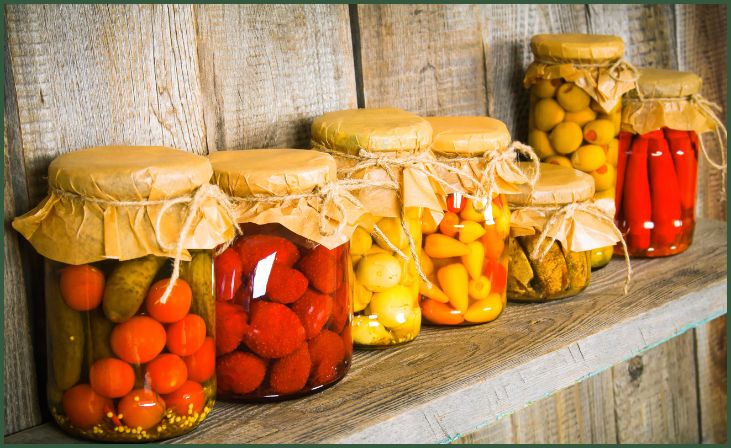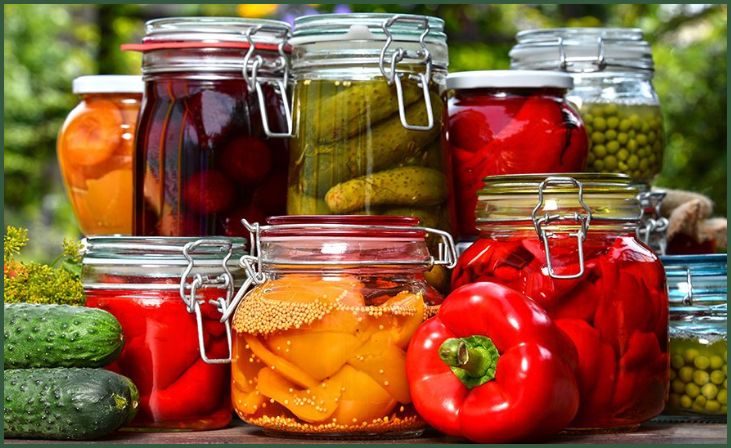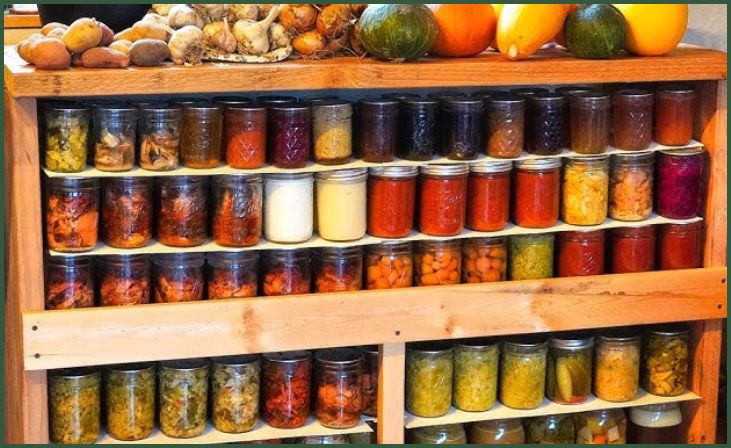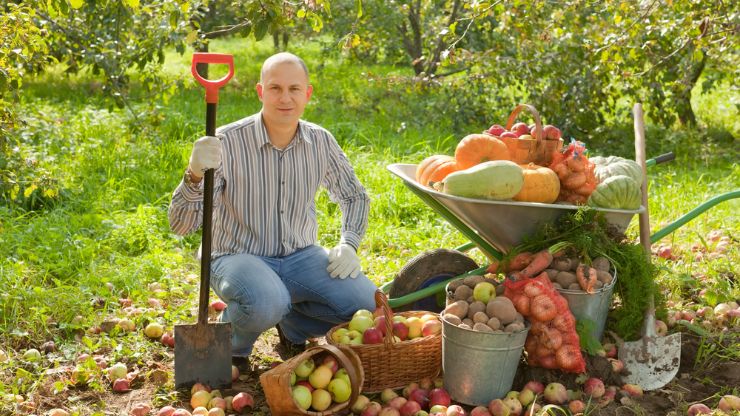Are you ready to savor the bounty of summer all through the chilly winter months? Look no further! Our comprehensive guide brings you the 15 best tips for preserving the harvest for winter. From time-honored techniques to modern preservation methods, we’ve got you covered. Say goodbye to seasonal limitations and embrace the flavors of summer year-round with these expert-approved strategies.
Table of Contents
ToggleBest Tips For Preserving the Harvest for Winter
Here are the “15 Best Tips for Preserving the Harvest for Winter”:
Plan Ahead

Create a detailed checklist of the produce you intend to preserve, taking into account quantities and specific varieties. Planning ahead allows you to avoid last-minute rushes and ensures you have ample time to gather all the necessary supplies and equipment.
Additionally, it enables you to streamline the preservation process, making it more efficient and organized, saving you both time and effort. Adequate planning also helps you make informed decisions about the best preservation methods for different types of produce, ensuring that you can effectively preserve each item at its peak freshness.
Select High-Quality Produce
Handpick the freshest and ripest produce, preferably straight from your garden or a trusted local source. Opt for fruits and vegetables that are free from blemishes, bruises, and other signs of damage.
By selecting high-quality produce, you can ensure that the preserved items maintain their flavor, texture, and nutritional value. High-quality produce also minimizes the risk of spoilage during the preservation process, allowing you to enjoy the best possible taste and quality of your preserved goods during the winter months.
Proper Cleaning
Implement a rigorous cleaning routine that involves thorough washing of all produce before preservation. This essential step helps eliminate any traces of dirt, pesticides, or harmful bacteria that may be present on the surface of the fruits and vegetables.
Proper cleaning not only promotes food safety but also contributes to the overall quality and longevity of the preserved items. By removing any contaminants, you can significantly reduce the risk of spoilage and ensure that the preserved produce remains safe for consumption throughout the winter season.
Also Read: Tips for Preventing Mold in your Ferments
Use Quality Preservation Supplies
Invest in premium-quality jars, containers, and packaging materials that are specifically designed for food preservation. High-quality supplies not only contribute to the aesthetic appeal of the preserved goods but also play a crucial role in maintaining their freshness and taste.
Durable jars and containers provide an airtight seal, preventing air and moisture from seeping in and compromising the quality of the preserved food. By using top-notch preservation supplies, you can extend the shelf life of your preserved items and ensure that they retain their original flavor and texture for an extended period.
Follow Recommended Recipes
Adhere to well-tested and trusted preservation recipes that have been proven to yield safe and effective results. By following recommended recipes, you can avoid potential pitfalls and ensure that the preservation process is carried out correctly.
Reliable recipes often incorporate precise measurements and detailed instructions, making it easier for you to achieve the desired preservation outcomes. Furthermore, following established recipes guarantees that the preserved items remain not only delicious but also safe for consumption, allowing you to enjoy the preserved produce with confidence and peace of mind.
Consider Seasonal Variations
Acknowledge the inherent differences in produce availability and quality across various seasons and adjust your preservation techniques accordingly. Different seasons may require different approaches to preservation to accommodate the unique characteristics of the available fruits and vegetables.
For instance, certain preservation methods may be more suitable for summer produce, while others may be better suited for winter harvests. By considering seasonal variations, you can make informed decisions about the most appropriate preservation techniques, ensuring that the preserved items reflect the distinct flavors and textures characteristic of each season.
Optimize Freezing Techniques
Master the art of blanching and flash-freezing to preserve the natural texture, color, and flavor of vegetables and fruits. Proper blanching helps preserve the natural enzymes and nutrients present in the produce while flash-freezing locks in the freshness and prevents the formation of large ice crystals, which can affect the overall quality of the preserved items.
By optimizing freezing techniques, you can ensure that the preserved produce retains its original taste and nutritional value, providing you with a convenient and efficient way to enjoy your favorite fruits and vegetables during the winter months.
Experiment with Different Preservation Methods

Broaden your preservation horizons by exploring diverse methods like pickling, fermenting, and drying. Each method offers unique flavors and textures, allowing you to create various preserved food options.
Pickling adds a tangy and savory dimension to your produce; fermentation introduces complex and probiotic-rich flavors while drying concentrates the natural sweetness and intensifies the flavors of fruits and vegetables.
By experimenting with different preservation methods, you can discover new taste experiences and create a diverse range of preserved goods that cater to different culinary preferences and occasions.
Label and Date
Develop a meticulous labeling system that includes the name and date of preservation for all your stored items. Clear and comprehensive labeling helps you easily identify and keep track of the freshness of each preserved item.
Don't just scroll, subscribe!
BuzzTrail's unique web-stories are the cure for boredom you've been waiting for.
By incorporating this practice, you can ensure that you utilize the oldest preserved items first, minimizing the risk of food wastage and ensuring that your preserved goods are consumed at their peak quality. Additionally, proper labeling and dating enable you to maintain an organized storage system, making it easier to manage your preserved produce and plan your winter meals effectively.
Storage Temperature Control
Maintain consistent and optimal temperatures in your storage area to prevent spoilage and preserve the quality of your stored foods. Proper temperature control is crucial in inhibiting the growth of microorganisms that can lead to food spoilage and contamination.
Whether you are using a pantry, cellar, or refrigerator for storage, it is essential to monitor and regulate the temperature to ensure that your preserved items remain safe and fresh for consumption throughout the winter season.
By prioritizing storage temperature control, you can safeguard the nutritional integrity and taste of your preserved produce, guaranteeing a delightful and wholesome culinary experience during the colder months.
Rotate Stock
Implement a regular stock rotation system to ensure the timely consumption of older preserved items before their quality deteriorates. By consistently rotating your stock, you can prevent the accumulation of forgotten or expired preserved goods, minimizing food waste and promoting a continuous supply of fresh and high-quality preserved produce.
Regularly checking and organizing your stored items enables you to stay mindful of their shelf life and consumption priorities, allowing you to maintain a well-managed and efficient stock of preserved foods for your winter culinary endeavors.
Also Read: Stages of Fermentation
Preserve Seasonal Flavors
Capture the unique essence and flavors of each season by preserving seasonal fruits and vegetables at their peak ripeness and freshness. Preserving seasonal flavors allows you to relish the vibrant and distinctive tastes of summer and autumn produce during the colder winter months.
Whether it’s the juicy sweetness of summer berries or the earthy richness of autumn squash, preserving seasonal flavors enables you to create a delightful and diverse assortment of preserved goods that celebrate the natural diversity and abundance of different harvest seasons.
By preserving seasonal flavors, you can infuse your winter meals with a delightful reminder of the warmth and vibrancy of the seasons past.
Vacuum Seal for Longer Shelf Life
Utilize vacuum sealing techniques to extend the shelf life of your preserved items and maintain their taste and quality for an extended period. Vacuum sealing eliminates air and moisture from the packaging, creating an airtight environment that inhibits the growth of bacteria and preserves the freshness of the stored produce.
By employing this method, you can prolong the shelf life of your preserved goods, ensuring that they retain their original flavors, textures, and nutritional value for an extended duration. Vacuum sealing offers a reliable and convenient way to safeguard the quality and longevity of your preserved items, allowing you to enjoy the bounties of your harvest throughout the entire winter season and beyond.
Use Natural Preservatives
Experiment with natural preservatives such as salt, sugar, and vinegar to enhance the flavor profile and prolong the shelf life of your preserved foods. Natural preservatives not only add depth and complexity to the taste of the preserved produce but also act as effective barriers against microbial growth and spoilage.
Incorporating natural preservatives in your preservation process allows you to minimize the use of artificial additives and chemicals, promoting a healthier and more natural approach to food preservation. By utilizing natural preservatives, you can create a delectable array of preserved goods that boast authentic flavors and textures while ensuring their long-term freshness and safety for consumption.
Share the Bounty

Spread the joy of home-preserved produce by sharing your preserved goods with friends and family, fostering a sense of community and sustainable food practices. Sharing the bounty not only allows you to showcase your culinary art or skills and creativity but also encourages others to embrace the art of food preservation and the benefits of consuming locally sourced and preserved produce.
By sharing your preserved goods, you can inspire a culture of sharing and sustainability, promoting a more conscious and interconnected approach to food preservation and consumption within your social circle and community. Sharing the bounty fosters a sense of togetherness and appreciation for the bountiful harvest, creating meaningful and memorable culinary experiences for everyone to enjoy.
Also Read: How Does Alcohol Fermentation Work
Conclusion
By following these 15 expert-endorsed tips for preserving the harvest for winter, you can enjoy the taste of sun-ripened produce even when snow blankets the ground.
Whether you opt for classic canning, freezing, or innovative drying techniques, the key lies in meticulous preparation and adherence to best practices.
Say hello to a pantry stocked with the vibrant tastes of summer, and bid farewell to seasonal scarcity. With these tried-and-tested methods, you can savor the joys of your harvest throughout the entire winter season.
FAQs
What are the essential tools needed for preserving the harvest for winter?
What are the essential tools needed for preserving the harvest for winter?
Basic tools such as canning jars, airtight containers, a reliable freezer, vacuum sealer, and dehydrator are essential for successful preservation. Make sure to invest in high-quality equipment for optimal results.
How long can preserved foods last in winter storage?
How long can preserved foods last in winter storage?
Properly preserved foods can last anywhere from several months to a year, depending on the method of preservation and storage conditions. However, it’s crucial to adhere to recommended guidelines and regularly inspect stored items to ensure their quality and safety.

